Matador Network's Blog, page 811
August 4, 2020
RVing through France
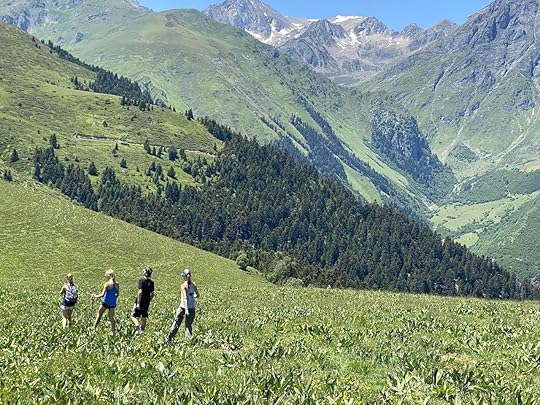
We live in Switzerland, and when internal borders opened in mid-June, our family of five rushed to the sea. We loaded up a rented RV with five bikes and five surfboards, and headed southwest toward France. We headed first to its Alpine foothills, then the Mediterranean, before skirting along France’s mountainous border with Spain on our way to the Atlantic. From there, we worked our way northward toward Normandy. Everywhere we visited, the other vacationers were almost exclusively French, yet each destination had its own, unique feel.
Several weeks earlier, we’d learned that Switzerland’s borders with France, Germany, and Austria would open in summer, but all else remained uncertain. For our family of surfers, it was clear France’s Atlantic coast should be our destination. We were weary of airplanes and unsure how a hotel experience might work. A family RV trip had long had an abstract appeal, and we moved quickly to rent one before they were snapped up. In fact, European RV rentals were up 60 percent this year over last. We rented the biggest one possible, which at 24 feet is much smaller than what you can rent in the US, but given Europe’s many narrow roads, that was just as well.
A canal city by the Alps
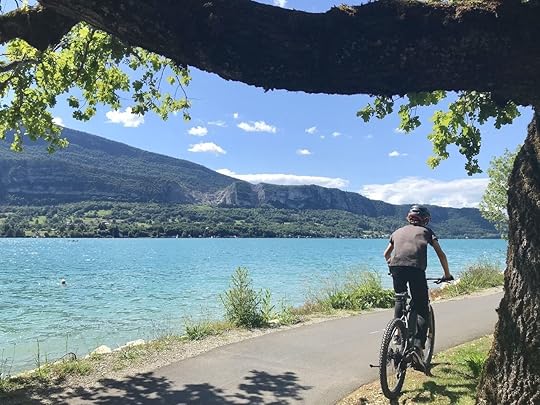
Photo: Noelle Salmi
From Zurich, we drove past Lake Geneva, crossed into France, and turned south toward Annecy, one of the most beautiful canal cities outside of Venice. More striking even than its canals is Annecy’s deep blue lake, backed by mountains soaring 7,000 feet skyward. We were on the outer edge of the Alps, not far from peaks reaching twice that height. Our first RV camping area was on a grassy rise with a view of that lake and those mountains, whose rocky crests turned deep red in the darkening night sky.
We had an unexpectedly good first night’s sleep in the RV. The campground was silent, and cool air wafted through the open, but screened, windows. We’d brought our own bedding, as European RVs come bare, save a brush and dust pan. Anyone coming from abroad could rent plateware and other items from the RV company, but they might prefer purchasing cotton sheets from IKEA over renting pricey synthetic ones.
We enjoyed freshly baked croissants pre-ordered from the campground office. We then rode our bikes three miles into Vielle Vieu, Annecy’s old town. It was a Saturday morning, and the bike path was as crowded and hair-raising as any stage of the Tour de France. Cyclists on touring bikes whizzed past on our left, squeezing between us and oncoming cyclists. We in turn all raced each other on our mountain bikes into town, sweaty but unharmed.
We found an outdoor table by the main canal, lined with pastel-hued buildings dating back to the 13th and 14th centuries, and enjoyed our first restaurant meal since lockdown. After lunch, we biked the 30 miles around Lake Annecy, taking in the changing water views and gaping at the parasailers who leapt off the mountain-top above and who added to Annecy’s outdoorsy feel. We finished the day with a dip in the lakes’s clear, clean, and cold water.
From the Mediterranean to the Pyrennees
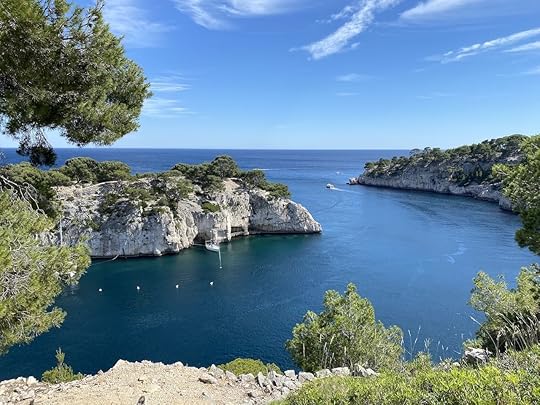
Photo: Noelle Salmi
From Annecy we traded the mountain vistas for the sea, driving southwards toward Calanques National Park, a stunning reserve of fjordlike inlets carved from white limestone cliffs on the Mediterranean coast. Atop the bluffs, sage and myrtle, with their sweet, minty scents, and twisted juniper trees added a third, verdant hue along with the cerulean sea and pale earth, to the stunning landscape.
Our campground was a nondescript collection of sites on the outskirts of Cassis, but our attention was on the national park, which we spent the day exploring on our mountain bikes. We stayed for a long time by one of the more accessible calanques, appreciating the hip, multiracial groups of friends who’d come on that Sunday to enjoy the crisp, piercingly blue water. We were close to the multicultural port city of Marseilles, and this would be the most diverse group of locals we’d encounter on our journey.

Photo: Noelle Salmi
We then left the coast for another set of mountains, this time the range that divides France and Spain. Having lived in Barcelona for two years starting in 2010 when our children were younger, we’d spent many winter weekends in the Pyrenees. But while the La Cerdanya valley is a ski area well worth exploring, the Pyrenees’ southern slopes rise gradually. It was startling, then, to arrive from the north, where they surge sharply from the lush valley floor. It felt we were seeing the mountains’ secret, more formidable backside.
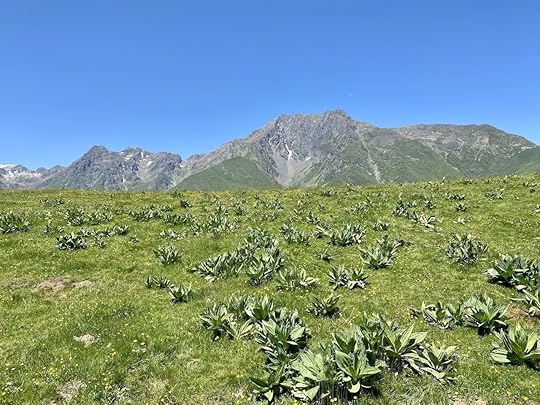
Photo: Noelle Salmi
We stayed in Saint Lary, a village below one of the largest ski resorts in the Pyrenees. Even in summer, the town’s sturdy homes in dark gray stone and rugged locals exude a ski-town vibe. From our small RV park at the foot of the towering peaks next to a gurgling creek, we could look up to see the seemingly endless switchbacks of a narrow road that has hosted a few Tour de France stages. We opted to ascend the mountain on foot instead. The steep grade and sweeping views felt similar to hikes we’d done in Switzerland, but the heat and flora at the higher elevations was new to us.
The French Basque Country
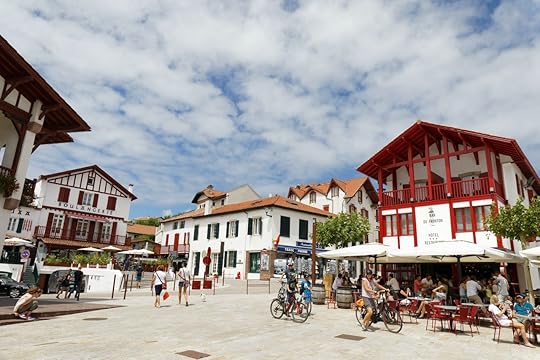
Photo: chromoprisme/Shutterstock
After our intense, multi-hour hike, we slept deeply. The next morning, after yet more croissants, it was time to again trade the mountains for coastline. In just over two hours we reached the Atlantic Ocean and French Basque Country. It’s the charismatic counterpart to the better-known Spanish side, which lies on the rainy, northern coast of an otherwise arid country. Once buoyed by industry and then plagued by separatist strife, the Spanish Basque Country has only recently become a tourist destination but remains a serious commercial area, as well.
The French Basque region, on the other hand, lies on France’s southern border and was long seen as a summer escape. Its main city, Biarritz, came to life as a playground for French noblemen in the mid-1800s, and today, it and the area’s other seaside towns retain a beachy, vacation feel. Between Saint Jean de Luz and Biarritz, both bigger areas with apartments and busy pedestrian shopping lanes, are the hilltop villages of Guethary and Bidart. The two are irresistible with their Basque architecture — white houses with wooden trim painted forest green, deep red, or royal blue, at times embellished with vibrant bougainvilleas.
We stayed in a rented apartment in Bidart and parked the RV in a free lot for the week. (Had we opted to stay in it, we’d have had a few cliff-top RV parks to choose from.) Using coastal bike paths, we explored the entire coast, eating freshly caught fish at restaurants overlooking town squares or situated by the water. The hardest seaside reservation to get is at Guethary’s Bahia Beach, from where we could watch surfers stretch their sessions into the final moments of daylight.
We were in France, so dinner attire was nearly always a button-down shirt or a summery dress. The imitable elegance, though, felt tempered by the area’s surfer vibes. We got in on these vibes as our apartment was within walking distance — on a long rambling path through a cut in the cliff — to a surf break. Following months in landlocked Switzerland, we were in the ocean. We surfed a lot.
Europe’s biggest dune
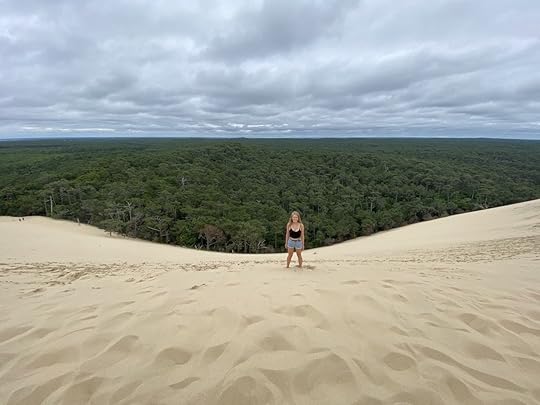
Photo: Noelle Salmi
After a week of good food and variable waves, we loaded up the RV, packing its tiny fridge with the fresh market produce we’d stocked up on, and headed northward toward a big lump of sand. Dune du Pilat is Europe’s biggest sand dune, measuring 350 feet tall and 1.7 miles long. After walking past tourist kiosks, I wasn’t sure I wanted to summit the dune. But when our son started running up the sand, we all followed, forgoing the out-of-place staircase that most visitors use.
Once atop the more than two billion cubic feet of sand, we were stunned by the view. The dune descended gently to a distant shore in front of us, beyond which lay barrier islands and the Atlantic Ocean. To the side, the dune stretched farther than we could see. Everywhere else was uninterrupted forestland. We picnicked on the windy dune and then jumped and jumped onto the forgiving, soft slopes before racing each other back down to the forest floor.
France’s Atlantic islands
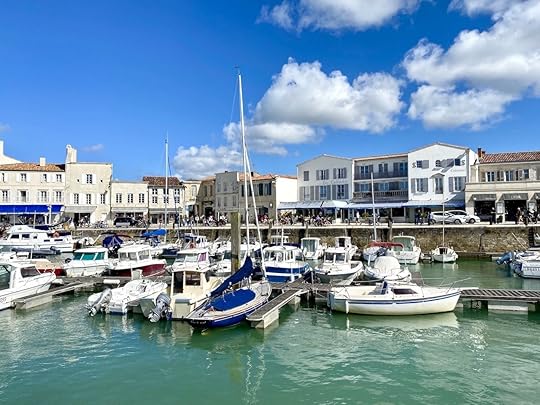
Photo: Noelle Salmi
Our next stop was Île d’Oléron. We’d chosen that island for the waves, but soon discovered that our RV park was nowhere near the surf break. In fact, our RV park had nothing really going for it, save the proximity, behind a tall wall, of the shore. French “camping” areas, as they’re called, are unlike most US campgrounds. They often neighbor other homes or apartments, carrying a mix of options from tent or RV sites to cabins.
It’s also critical to read reviews or to call the RV park to inquire about views since relying on photos alone can be deceiving. A drone shot might show picturesque surroundings, but an RV park on flat ground within an enclosure offers only a soulless vista of neighboring camper vans.
On Île d’Oléron, however, we did take advantage of the sea beyond the wall. After dinner, we explored tide pools extending out for 200 yards — admiring the late evening light and hundreds of tiny hermit crabs.
The next morning, we packed up quickly, realizing the island we really wanted to visit was the next one over. Île de Ré is a quiet treasure that’s been called the Hamptons of France, and it’s a five-hour drive for chic visitors from Paris. On our own 90-minute drive there, we hastily researched RV parks, stumbling on an app called park4night that lists all of the available parking options in a given area — whether at pay-for facilities or for wild camping. Wild camping is semi-legal in France as long as you avoid heavily touristed areas and don’t stay too long in any one place.
Although it had no photos, one wild spot on the island’s south side seemed promising. A reviewer had warned about the sandy, narrow road to get there, but we chanced it and were thrilled to find an open field amidst the trees. After parking our dusty RV, we walked a short path over a small dune to a wide beach that stretched as far as we could see in either direction, and we thanked our good luck. We’d traded access to fresh water (beyond the water we had in the RV) for a leafy space of our own, but we were biking distance from a camping area.
After the beach, we walked back to the RV, threw on our most presentable summer clothes, and rode our bikes along some of many cycling paths that encircle and criss-cross the island. Our destination was the town of Saint Martin de Ré on the island’s north side, where cream-colored buildings dating to the 17th century line the canals and al fresco dining spills out from the many restaurants and cafes. Twice more we’d return to the picturesque town, with its fishing boats, a lighthouse, and colorful boutiques, eating everything from goat cheese salads and buckwheat crepes to Atlantic spiny lobster.
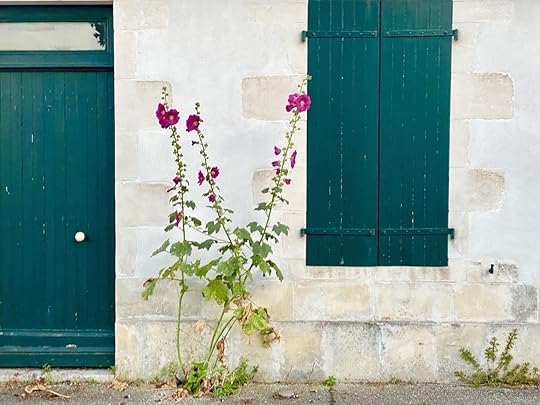
Photo: Noelle Salmi
Whereas Annecy’s cyclists were hardcore enthusiasts on multi-thousand-dollar racing bikes, in flat Île de Ré, perhaps the most common two-wheeler was a pastel blue cruiser with a whicker basket. Surfable waves here were few. Île de Ré seems more a place for a leisurely beach walk or a game of tennis. Seeing lithe teenage girls with their delicate, flowery dresses and $600 tennis shoes, the Hamptons comparison seemed apt.
At the same time, the Parisian vibe stopped at the architecture. On each ride back to our RV we opted for another route, biking through tiny villages of unembellished white and cream homes that seemed more Mediterranean than Atlantic. And everywhere, the island’s ubiquitous hollyhock flowers — growing on six-foot-tall stocks and in hues from pale pink to purple — stood guard by doorways and decorated the whitewashed walls.
Mont Saint-Michel
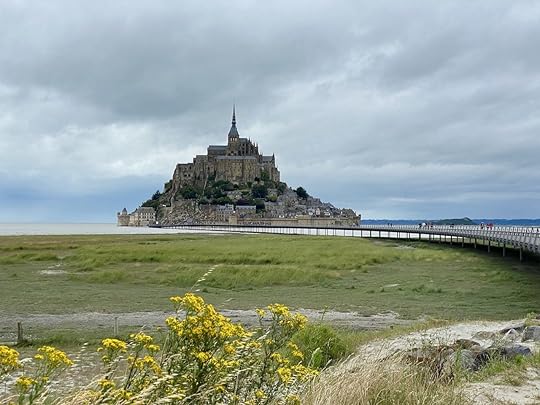
Photo: Noelle Salmi
Our next stop was due north: Mont Saint-Michel, the tidal island that over the centuries has served as everything from a hermit’s hideaway to a military garrison. When you first glimpse the mountain-like citadel just offshore, ringed by impenetrable walls, you understand how it was able to stave off English incursions for the entirety of the 100 Years War.
You can’t drive in without a dinner or hotel reservation. And although the tide was out, the land around Mont Saint-Michel feels unpassable, a sticky sand-mud mixture that grips your shoes and won’t let go. So we parked our RV on dry land and rode our bikes across the half-mile-long bridge. Passing the gateway to ascend to the abbey, we started walking our bikes up the narrow, cobbled lane, lined by dark storefronts that looked eerily like Diagon Alley.
It was drizzling by the time we got back to the RV. Despite the late hour, our park4night app didn’t let us down, leading us to a road that ended at a vast, windswept beach. We parked inches from the sand and with a far-off view of Mont Saint-Michel. As the rain poured, we had our first indoor dinner in many days.
The cliffs of Normandy
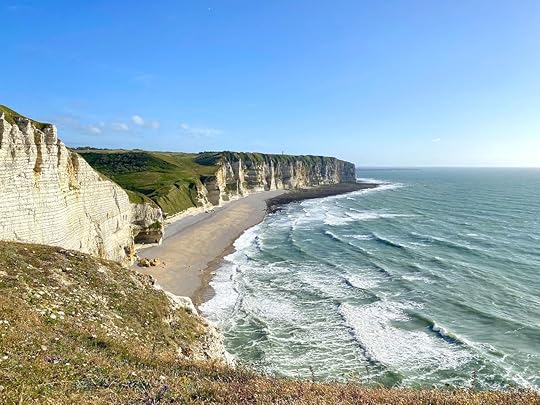
Photo: Noelle Salmi
We had a lot of ground to cover this day as we wanted to get to the cliffs of Normandy, which rival those of Dover across the way. We drove past towns of heavy stone houses trimmed with bright flower boxes, reminiscent of the English countryside. We stopped for lunch in Deauville, a coastal city with a casino that was once a weekend escape for wealthy Parisians. While it still had plenty of posh boutiques, its heyday felt behind it.
From there we drove to Etretat to see the Falaise, a 300-foot-high natural arch extending out from the gleaming ivory-toned cliff. We oohed and aahed at the arch from the RV and then made a speedy getaway from Etretat’s tourist-choked streets. We backtracked to park at a trailhead due south of Entretat, reaching it by 6:00 PM.
Climbing upwards toward the cliffs, we were alone, passing fields of wheat whose golden color was made more so by the evening light. When we reached the escarpment, we gasped. As a family of surfers, we’ve seen a lot of coastlines — but these 300-foot-high cliffs, gleaming white in the sunshine, were the tallest we’d seen. We made our way carefully to an outcropping, weary of any sudden change of direction of the howling wind, and marveled.
Sleeping 300 feet above the sea
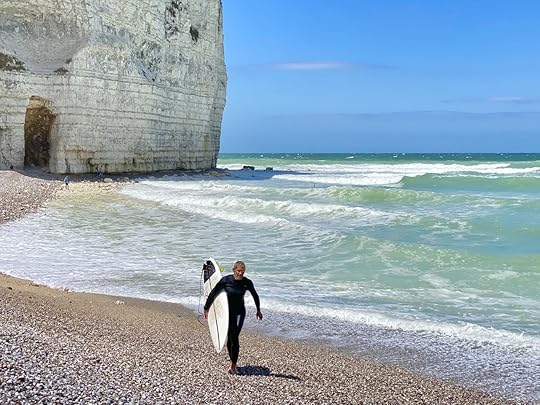
Photo: Noelle Salmi
It was late by the time we got back to the car and we planned to again use our trusty park4night app. Only this time, it let us down. As we approached the next wild camping destination, intimidating signage next to stately homes warned private vehicles to stay away. Apparently the neighbors here had lost their patience with scruffy RVers.
The sun was getting lower and we needed a place to sleep. We’d been scarred by the janky, overpriced RV park in Île d’Oleron (even though Annecy and Saint Lary’s RV lots had been quite scenic) and had taken to wild camping. But it was nearing 9:00 PM, and the wind was howling. We took a chance and drove into the next RV park.
We couldn’t believe our eyes. We were 300 feet above a bay, the sea and the cliffs stretching into the distance. It was late and the RV office was closed, but we found an empty slot on the lush grass, complete with an electrical hookup. Although the wind made outdoor dining impossible, we couldn’t get over the view. Our RV shook overnight in the gale, but when we woke in the morning, the sky was blue and the air still.
My husband went for a run down towards the shore, where he saw two surfers catching waves in the milky, aquamarine water, so-colored due to minerals that leach from the cliffs. He rushed back uphill, threw on his wetsuit, grabbed his shortboard, and made it down in time to carve up a few waves that wrapped around the cliff before the mammoth tidal change would first kill the waves and, by evening, push the water back about 500 yards.
While he surfed, the rest of us ate at a restaurant by the water, then strolled through the quiet village of Yport. Again, a different feel, with dark, solid homes built to withstand North Atlantic storms. We picked up enough vegetables from a small grocer for our last dinner in the RV. The next day we’d depart early, stopping for lunch in Burgundy, on our way back to Switzerland — ever grateful that the last place we’d stayed in our RV was the most beautiful of all. 
More like thisCampingRVs are the way to travel this summer. Here’s where to hit the road.
The post RVing through France is the perfect way to do it all — at your own pace appeared first on Matador Network.

Electric tuk tuks during COVID-19
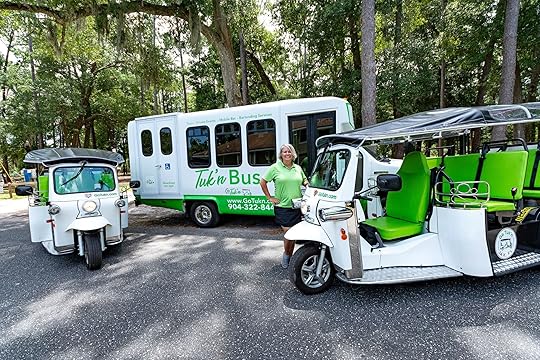
Ride-hailing platforms have taken over the transport game in recent years due to their convenience and ease-of-use. In the COVID-19 era, however, passengers may be more wary of getting in a small, enclosed environment with a stranger. One possible solution could be to borrow a transportation service from across the world: the tuk tuk. Tuk tuks, popular in Asian and Latin American countries, could be the perfect pandemic vehicle for US urbanites since they keep passengers and drivers in the open air.
The Jacksonville Transportation Authority (JTA) recently announced a partnership with Go Tuk’n, a local electric tuk tuk company, for a pay-to-ride shuttle service through two of the city’s neighborhoods. The new service will allow passengers to book rides on the three-wheeled tuk tuks to businesses and restaurants.
Go Tuk’n has operated in Jacksonville since early 2018, but the new partnership with JTA establishes the service as more than just a tourist attraction.
CEO Stephanie Dale said, “If we can show how to move people around urban areas, we might have people saying, ‘I don’t have to bring my own vehicle downtown.’ We cover distances that aren’t walkable, and we can get onto the roads that buses can’t do very easily.”
In Jacksonville, the electric tuk tuks will help replace smaller shuttles that have become too expensive to operate. They offer more flexibility than buses by utilizing side streets and narrower roads that aren’t on bus routes, and are more environmentally friendly than gas-powered cars.
Jacksonville’s tuk tuks, despite being in the open air, provide sanitizer to riders and require masks. The airflow is not everything after all.
Tuk tuks won’t completely replace ride-hailing platforms anytime soon, but maybe this is the first step toward tuk tuks becoming more ubiquitous in the US. 
More like thisCultureThe 6 most unusual methods of transportation around the world
The post Electric tuk tuks could be key to COVID-19-era transportation appeared first on Matador Network.

Utah road trip beyond national parks
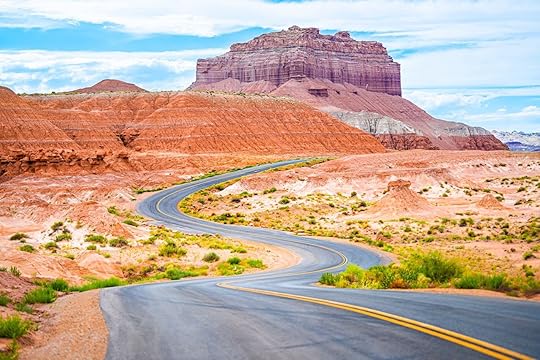
Utah is best known for its five big national parks — Zion, Arches, Canyonlands, Capitol Reef, and Bryce Canyon — as well as numerous national monuments to boot. But there’s much more to the state. These seven spots offer a thorough overview of Utah’s history and natural splendor and can be done in a relatively organized fashion. Start in the state capitol and be ready to cover a lot of ground. Utah is a big state.
1. Drive from Salt Lake City up Big Cottonwood Canyon.
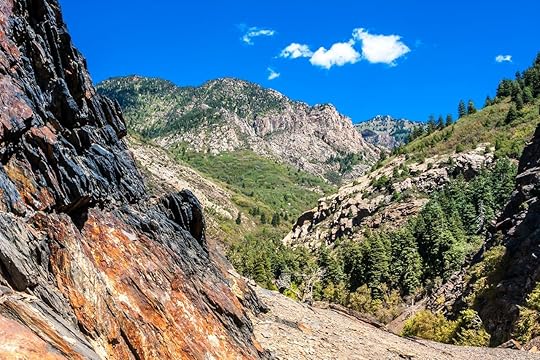
Photo: Aneta Waberska/Shutterstock
To do Utah correctly, approach the state via Interstate 80 or 15 and plan to spend a day or two in Salt Lake City. Spend an afternoon exploring Temple Square, photogenic even to those not of the Mormon faith; walk the historic Marmalade Hall neighborhood; and, if traveling with kids, check out the Hogle Zoo. Before heading out, drive Big Cottonwood Canyon, the gateway to Utah’s ski country in the Wasatch and a National Scenic Byway. Take in expansive views of peaks and valleys, wildflowers, and lakes. Should you wish to squeeze a quick hike in, the Donut Falls trail leads to one of the area’s most unique waterfalls, where the water flows continuously through a hole in the rock into a gorgeous pool below.
2. Explore the Spiral Jetty and camp nearby.

Photo: Matthew Dahl/Shutterstock
Utah’s camping game is on point. You can find dispersed sites throughout the Wasatch Mountains, camp lakeside at Lake Powell, or make a reservation at one of the Big Five national parks. The most unique of Utah’s primitive camping areas is the Spiral Jetty, on the north side of the Great Salt Lake and not far from the city. The jetty itself is a massive piece of “land art” created by artist Robert Smithson out of an old oil rig. It spirals into the lake to create one of the most unique photo opps in the state. It’s remote and beautiful, with a vibe that’s part Burning Man lite, part family attraction. Dispersed campsites are located nearby, most offering incredible views of the sun setting over the lake.
3. Channel your inner “mountain hipster” in Park City.

Photo: Sean Pavone/Shutterstock
Forty minutes from Salt Lake City is the small mountain town of Park City. It’s not a secret: Park City draws around 600,000 visitors each year. Thing is, most don’t actually experience the town for all its worth. Yes, the ski resorts, hiking, mountain biking, and other outdoor activities are world-class (and you should definitely do at least one while in the area). But the town itself is a quintessential American mountain town, with a downtown strip lined with high-mountain fare, craft beer, and the Alf Engen Ski Museum, which chronicles the history of skiing in one of the world’s ultimate places to do it. Also, try Utah’s best craft whiskey at High West Distillery. There’s no better way to feel like one of those hip, but also slightly rebellious and wild, mountain types.
4. Hike to Fifth Water Hot Springs and its amazing waterfalls.
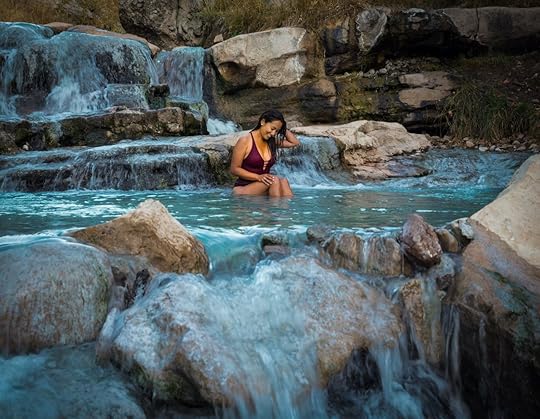
Photo: Double Bind Photography/Shutterstock
After visiting Park City, it’s time to head south on Highway 189. While many roadside hot springs are overcrowded and often more hectic than relaxing, the 2.3-mile hike into Fifth Water Hot Springs keeps those away who are unwilling to work for the reward. That said, there can be a few people, some of whom are likely to be nude, so pack a lunch and hit the trail first thing in the morning. You’ll pass three gorgeous waterfalls en route to choosing the pool that fits your temperature preference. There’s no cost nor amenities beyond the natural, and the highway is far enough away that you can relax to the sound of rushing water. The Wasatch range surrounds the springs in all directions, making the atmosphere that much more tranquil. The trailhead is located just off Diamond Fork Road about 45 minutes southeast of Provo.
5. Explore Goblin Valley State Park.
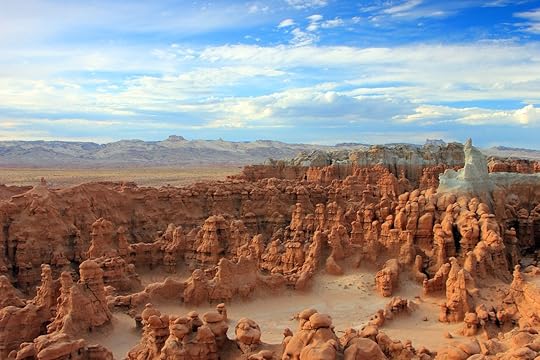
Photo: Johnny Adolphson/Shutterstock
National parks and monuments dominate most headlines of southern Utah, but Goblin Valley State Park is equally deserving of a visit. Allow about 3.5 hours to reach the park from the Fifth Water Hot Springs or Provo. The bizarre sandstone formations known as goblins and gnomes that give the park its name lend the area a Mars-on-Earth feel. Be sure to hit Hoodoos where you’ll find massive clusters of the structures. The park is a hub of canyoneering, an active sport that involves rappelling down into a slot canyon to explore hard-to-reach spots. Give it a go at the Goblin’s Lair (guided excursions are available through Get In The Wild) with a $2 backcountry permit and the proper gear. Should one day not be enough, 25 campsites and two yurts are available. If you happen to pass by the Hoodoo Hotdogs truck inside the park, stop for cheap eats — the most expensive dog on the menu is only $3.50.
6. Tour the Bluff Fort Historic Site.

Photo: Jakub Zajic/Shutterstock
What’s a road trip without a look back in time? After experiencing the natural wonder of Goblin Valley, a bit of man-made charm is up next in the town of Bluff. Bluff Fort Historic Site is the restored remnants of a Mormon mission to establish a presence in southeastern Utah in the 1800s. Here you’ll walk through the edifices that hint at what life was like during the pioneer days: the fort, which served as the hub of the community and held a church, school, and other common areas, as well as the original general store and one of the cabins lived in by the town’s earliest Mormon residents.
7. Finish at Goosenecks State Park.
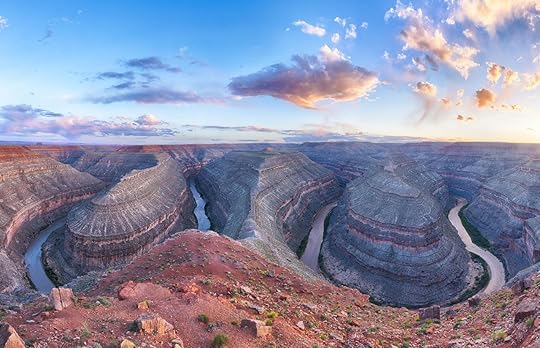
Photo: Filip Fuxa/Shutterstock
You’ve seen photos of Utah’s Antelope Island and of Horseshoe Bend in Arizona. Goosenecks State Park is the best of both, without the hoards of Instagrammers spending an hour framing the perfect selfie when you just want to get in for a quick shot of the view. Here, the San Juan River winds around tight turns known as goosenecks. Stand 1,000 feet above the goosenecks, where the view looking down is rivaled only by the view across the park — so also get ready for a serious case of hiker’s wanderlust and quell the urge at the nearby Honaker Trailhead. Limited camping is available within the park, though all spots are primitive. There’s no better way to leave Utah than with the image of the Goosenecks in your mind’s eye. 
More like thisTravelTravel ideas for your 2020 summer trip
The post This road trip shows there’s even more to Utah than its national parks appeared first on Matador Network.

Futuristic bike garage the Hague
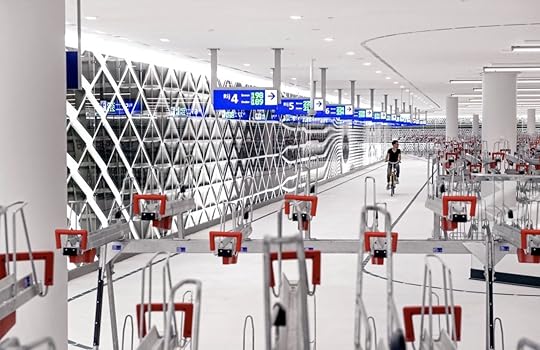
There’s usually nothing aesthetically pleasing about a bike garage, unless you live in Europe’s most bike-obessed country: the Netherlands. One of the world’s largest bike parking garages has just been unveiled in The Hague, and it’s like stepping into the hull of a spaceship. With room for 8,000 bikes, the garage is located under a plaza conveniently located in front of the central station.
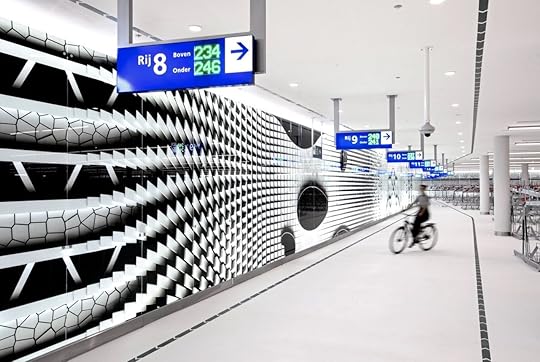
Photo: Silo
If you’re picturing a dark, concrete parking garage, shake that image right out of your head. This structure is bright with white ceilings and backlit glass walls, as well as electronic smart directional markings to point out vacant spaces. It looks a little bit like a futuristic airport.

Photo: Silo
The extraordinary light walls that make the space so light-filled and modern feature design elements of the urban landscapes above ground, like the building facades.

Photo: Silo
Rene Toneman, Partner at creative agency SILO, told Lonely Planet, “By subtly weaving together facade elements of iconic buildings of The Hague, we have created a luminous cityscape akin to the works of Dutch graphic artist M.C. Escher. We took inspiration from the impression one gets from cycling through a city at high speed. Buildings appear to blend into one another in one continuous flow. A visit to a bicycle parking garage has never been such a museum experience, free entrance!” 
More like thisCyclingCycling solo across the USA is more doable than you think
The post This futuristic bike garage in the Netherlands is like cycling into a spaceship appeared first on Matador Network.

Rent a celebrity tour bus
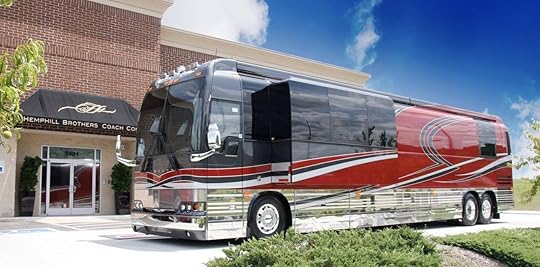
Road trips are always exciting, but nothing livens up the dreary stretches of flat highway like some good old-fashioned delusions of grandeur. Instead of crossing the empty plains in your beat-up sedan, why not rent a tour bus usually reserved for celebrities.
It’s no secret that live concerts and festivals are on pause right now. That means an abundance of tour buses are sitting in disuse. Hemphill Brothers Coach Company — a Nashville-based company that rents tour buses to celebrities like Beyonce, Paul McCartney, and Taylor Swift — is now renting its entire fleet of over 100 luxury RVs to the non-famous public.
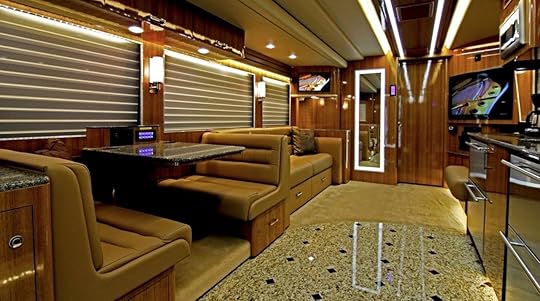
Photo: Hemphill Brothers
The vehicles’ interiors are custom made and come equipped with heated marble bathroom floors, Apple TVs, hardwood floors, genuine leather, and granite detailing. Some buses even have special additions like treadmills, pianos, indoor fireplaces, and tanning beds. And, best of all, they come with a skilled driver.
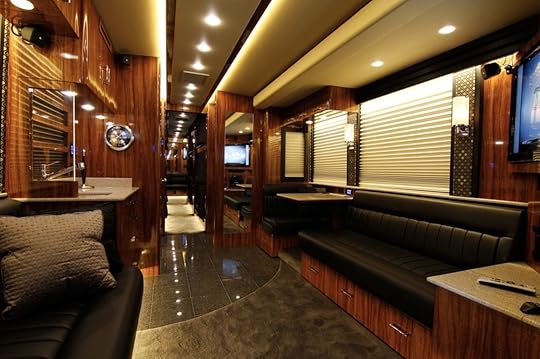
Photo: Hemphill Brothers
The price of renting a tour bus will vary depending on the destination, length of the rental, specific bus, and other factors. Nashville Lifestyle estimates that “a bus accommodating 12 people (plus luggage and pets) from Nashville to the famous 30A beaches of Florida is $3,600 in July and August 2020.”
It definitely won’t be cheap, but at least you’ll turn more heads than you would in your sedan. 
More like thisCampingRVs are the way to travel this summer. Here’s where to hit the road.
The post Rent a celebrity tour bus for your next road trip and travel like a rock star appeared first on Matador Network.

Uluru closed amid protests

Uluru, an immense monolith sacred to the Anangu Aboriginal people in Australia’s Northern Territory, has seen its fair share of controversy over the years.
It took several years for Uluru-Kata Tjuta National Park’s management board to ban people from climbing the spiritually significant and monumental geological formation that is also a UNESCO World Heritage site. It’s been prohibited to climb Uluru since October 2019.
But these days, the traditional owners of Uluru have another tourism-related worry in mind. They want to reduce the risk of spreading COVID-19 in their already vulnerable community and, to do so, have been blocking the park’s entrance from visitors.
On Monday, between 30 and 40 protesters stood on the main entrance road to the park, blocking tourists from entering. They were there again on Tuesday.
Thalia Bohl-Van Den Boogaard, who represents a group of Indigenous Australians protesting the visitors, told Reuters, “It’s up to tourists to stay away if they come from hotspots or are sick. People here have been locked in their communities for months and months to contain the spread, and now it’s not up to them to do the right thing.”
To address the issue and curb any potential spread, Parks Australia decided to close the park entirely. It will remain closed while discussions are held with Indigenous groups and Northern Territory officials, and measures are implemented to increase screening and testing in the area. 
More like thisCultureWhy Aboriginal culture should be part of your Australia trip – and how to do it right
The post Uluru closed to visitors after Indigenous protesters block access road appeared first on Matador Network.

History of Port wine
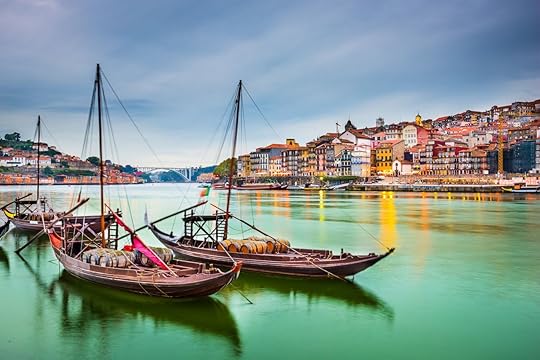
In the world of wine, location is everything. So much so that the most famous wine styles in the world are known first and foremost by where they’re made. And just as a region’s history shapes the wine made there, the wine shapes the region’s history. A classic example of this is Porto, Portugal, which defines, and is defined by, Port wine.
“Port is a style of wine that has one of the greatest histories in the world of fine wine,” says David Guimaraens, a winemaker with the Port house Taylor Fladgate. “That history goes back over three centuries, and it’s a beautiful history because it’s a combination of the craftsmanship of merchants in the city of Porto and the hard work of many families in what is one of the most beautiful wine regions in the world, the Douro Valley, and how these two over time worked to create the style of Port wine.”
Port is a wine that’s fortified with brandy. Like Champagne, it must come from a specific region (in this case the Douro Valley in northern Portugal), and it must be made according to a strict set of rules. There are some 50 types of grapes that can be used, including the indigenous touriga Franca, touriga nacional, and tinta roriz. Though the grapes are grown farther inland, the wine is named after the city of Porto, which is Portugal’s second-largest city. Porto sits where the Douro River meets the Atlantic Ocean, and the city is famous for its wine cellars and historic position as the center of the Port wine trade for the world.
Before the coronavirus pandemic, Porto was quickly growing as a tourist destination. Travel is stymied for the time being, but it’s still possible to get a taste of one part of what makes the region so attractive.

Photo: BONDART PHOTOGRAPHY/Shutterstock
Winemaking along the Douro River dates back to the ancient Romans, who arrived around 200 BCE. Wine continued to be an important part of the culture through the start of the Kingdom of Portugal in 1143. Port as we know it, however, came about in large part due to a notable population of British merchants and expats, which is why many of the Port companies today have English names.
The trading relationship between England and Portugal started with the 1386 Treaty of Windsor. Wine would go from Portugal to England, while salt cod (bacalhau) went from England to Portugal. The wine trade between the two countries increased in 1667 due to tension between England and France that kept French claret wine off English shores. Under the Methuen Treaty of 1703, Portuguese wines had a third less of an import tax levied on them by England than French wines did.
The Brits were left to find a region outside France to quench their thirst, and they wanted a heavier wine than the wines from the coastal region of Portugal. The Douro Valley was the answer, and merchants shipped the wine from the valley to the coastal port town of Porto and finally to England to fill the demand.
Yet, due to the distance between Porto and the British Isles, some of the wines spoiled before they made it to their final destination. Either sailors or merchants added brandy to fortify their wines for the journey — an addition that would eventually become a defining characteristic of Port.
This English demand led to a thriving wine export industry in Porto in the 1700s. By the mid-1700s, Port had grown into an important economic driver for Porto and Portugal as a whole. The prime minister, Marquis of Pombal, decided to codify production styles to ensure a consistent product under the watch of the government. Pombal formed the Companhia Geral da Agricultura das Vinhas do Alto Douro in 1756, which had a monopoly on all wine going to England and Brazil. He also placed 335 stone pillars (called marcos pombalinos) that marked where Port could officially be produced. Vineyards were classified by quality the following year — a move that wouldn’t happen in Bordeaux for another century — and the world’s first legally classified appellation system for wine (the regiões demarcadas) was born.
The wines took the name of the city they were shipped from, but there would be no Port without the Douro Valley, where the grapes are grown and the wine is made. From there, the wine has historically been ferried down the Douro River on boats called barcas taverneiras that were navigated over rough waters by skilled boat pilots called barcos rabelos. The river was the main artery for wine on its way to Porto for centuries, though road travel took over in the mid-1900s, with the last commercial boat sailed in 1964.

Photo: Alvov/Shutterstock
Port’s popularity waxed and waned over the centuries. A civil war and phylloxera, a louse that devastated European vineyards, hurt the industry in the 1800s. The two World Wars and the Depression did as well. Since the 1950s, Port has become associated with the elite — not necessarily a distinction it deserves.
“Port has a bit of an image of formality when being drunk in England,” Guimaraens says. “But go back half a century ago, and many people don’t realize that Port and lemonade used to be drunk in the pubs on the coast of England, and that used to be one of the most popular drinks. Go over to North America, and in the 1990s the passionate Port drinkers would be drinking their vintage Ports.”
Over the last two decades, things have continued to change. Not only in how Port is drunk — bartenders in the US mix Port into cocktails, for example — but also how Port, and the city it gets its name from, is perceived. Porto was often seen as a working city (one saying goes: “Coimbra sings; Braga prays; Lisbon shows off; and Porto works”) while the vineyards in the Douro Valley got most of the attention from wine tourists.
“Many people in the world have a good understanding of Port wine,” says Adrian Bridge, CEO of The Fladgate Partnership, which includes the brands Taylor Fladgate, Croft, and Fonseca. “But they don’t necessarily connect it to the city of Porto because the city has only recently opened up as a tourist destination.”
Luxurious, Port-centric hotels like the Yeatman helped to shift the attention toward Porto and its long history intertwined with Port wine.
“People come, they walk the vineyards, they see the beauty of the Douro Valley, they see this incredible city, and then they fall in love with the [wine],” Bridge says. “That’s why we’ve expanded for tourism and that’s why we’ve created accommodation for people so they can come and they can stay. And the success of The Yeatman, which opened 10 years ago, is to open up the destination for leisure.”
For now, like so many travels, Americans have to wait to experience that leisure. They don’t have to wait, however, to drink the wine that made Porto famous the world over. 
More like thisWineIn Portugal’s Alentejo, wineries battle climate change with creativity
The post To understand Portugal’s second city, start with Port wine appeared first on Matador Network.

Hello Kitty-themed flight Taiwan

If your dad’s idea of the perfect Father’s Day is a Hello Kitty-themed flight, he’s probably a lot cooler (or at least a lot more eccentric) than most dads. However, in Taiwan, dads must be very comfortable with their inner child because to celebrate Father’s Day in Taiwan — which falls on August 8 — Taiwanese airline EVA Air is selling tickets to a flight in an aircraft with Hello Kitty livery.
If you’re wondering about the destination, well, that’s an easy one — there is none. Given travel restrictions to other nations, flying abroad presents some difficulty, so the Father’s Day flight will simply take off, fly around for three hours, and then land.
The flight will cruise toward Japan at an altitude of 25,000 feet (a little lower than usual for commercial flights), flying over Taiwan’s eastern coastline. It will pass above Guishan Island, the east coast of Hua, and then head south to Eluanbi and Xiaoliuqiu before turning around and heading back to Taipei Taoyuan International Airport.
If a flight to nowhere doesn’t sound enticing, guests will also be given a special amenity kit with gifts, the chance to purchase Hello Kitty duty-free items at bargain prices, and served a seafood feast prepared by Michelin-starred chef Motokazu Nakamura.
Economy seats are selling for $180 each, while business class is going for $215 each. If you’re still not sold on the idea, the flight number (BR5288) was chosen to specifically sound like “BR I love Dad” in Chinese. If that’s not touching, we don’t know what is. 
More like thisAirports + FlyingThe 7 coolest airplane liveries in the world and the stories behind them
The post This airline is offering a Hello Kitty flight to nowhere for Father’s Day appeared first on Matador Network.

US cities named after European ones

Nothing is more envy-inducing than listening to a friend rattle off the list of cities they visited on a whirlwind Eurotrip, especially when your own chances of touring the continent are slim. Sure, you could go to Vegas for the gladiator getups and replica Eiffel Tower, but sauntering up and down the Strip will never feel like the real deal. Planning a trip to Athens, Florence, and Vienna might, though, even if you’re not in Europe at all.
All across the United States are namesake cities that deserve to be destinations in their own right. So put your passport away, gas up for a road trip, and reimagine the classic European itinerary right here in your own backyard. Eurail pass not required.
Athens, Georgia

Photo: Paul Brennan/Shutterstock
Ancient Greece gave us the Olympics. Athens, Greece, hosted the first modern Games. But the Bulldogs pride for University of Georgia football in the US’ Athens is something else. Athens is a college town with all the trappings of one: a huge number of bars filled with just-legal drinkers, the Terrapin brewery, epic tailgates at Sanford Stadium, and a university-run art museum and botanical garden. Of particular note is the city’s music scene, which helped launch bands like R.E.M, The B-52s, and Of Montreal. The 40 Watt Club is the most legendary venue in town.
Dublin, Ohio

Photo: Kenneth Keifer/Shutterstock
A surprise to no one, Dublin, OH, prides itself on its annual St. Patrick’s Day parade. The rest of the year, it’s a city of golfers, disc golfers, nature walkers, and cyclists, with over 1,000 acres to explore at Highbanks Metro Park. Hike to Indian Run and other waterfalls, cross the Dublin Link pedestrian bridge, and discover dozens of public artworks. Ice cream is a nice reward back in the historic red-brick downtown: There are enough ice cream shops in Dublin to try a different one every day of the week. One night, fancy it up with cocktails at the VASO Rooftop Lounge.
Florence, Alabama

Photo: Ace Eaton/Shutterstock
Italy’s Florence is known as the birthplace of the Renaissance. Florence, AL, belongs to The Shoals, or Quad Cities, a cluster of four cities on either side of the Tennessee River that fostered a different artistic renaissance: the Southern rock, soul, and R&B sounds of the 1960s. Artists like the Rolling Stones and Aretha Franklin recorded hits at the legendary FAME Studios, which stands for Florence Alabama Music Enterprises though it’s located across the water in Muscle Shoals, and the Muscle Shoals Sound in nearby Sheffield. Tuscumbia, the fourth Quad City, is also the birthplace of Hellen Keller, whose childhood home is open to visitors.
Geneva, New York

Photo: debra millet/Shutterstock
Much like its Swiss namesake, Geneva, NY, sits on the edge of a famous lake: Skirting Seneca Lake in the Finger Lakes region, Geneva is the gateway to the Seneca Lake wine trail, which is quickly growing as a viticulture and agritourism destination. Two estates stand out: Three Brothers, which houses three wineries plus the War Horse brewery and cidery, and Belhurst Castle and Winery, which also makes wine, craft beer, and hard cider. Guests can also stay at Belhurst Castle, a historical site from the late 1800s turned romantic wine hotel and spa.
Gloucester, Massachusetts

Photo: Richard Cavalleri/Shutterstock
In England, Gloucester opens to the rolling countryside and medieval villages of the Cotswolds. In Massachusetts, Gloucester is a port town that’s almost as old as New England, claiming the title of the US’ oldest. But the city’s real 15 minutes of fame came in 2000 when Gloucester served as the filming location for Hollywood’s The Perfect Storm. Whale-watching and boating around Cape Ann are popular activities here, as are beach-hopping and lighthouse-chasing. Before you leave, try the lobster roll at local institution Lobsta Land.
Madrid, New Mexico
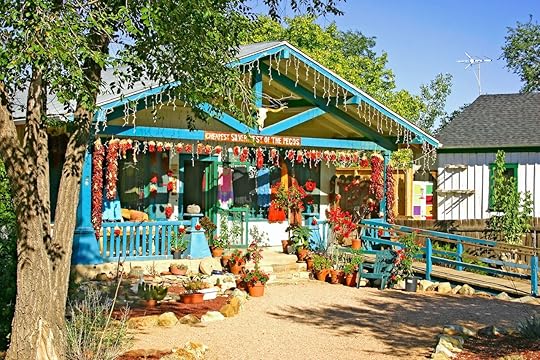
Photo: Gary L. Brewer/Shutterstock
Spain has the Museo del Prado, but New Mexico’s Madrid is one big open-air gallery. Once a mining town, later a ghost town, and today an artist community, this stop on the Turquoise Trail that runs from Albuquerque to Santa Fe is filled with artworks and handicrafts — Indigenous, local, fine, folk, you name it. Pose with lifesize cutouts at Connie’s Photo Park and drink at the rebuilt Mine Shaft Tavern, home to the longest bar in New Mexico. If you’re in the area over the holidays, don’t miss the epic parade that earned this hippie haven the nickname Christmas City.
Milan, Ohio
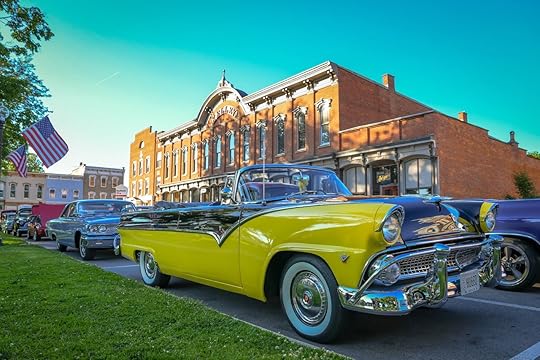
Photo: Keith J Finks/Shutterstock
Milan, OH, is not much to look at compared to its more famous counterpart, but it has small-town charm in spades. Its main claim to fame is that Thomas Edison was born there, a fact it honors at the Thomas Edison Birthplace Museum. But Milan has other fun quirks, too. Every Tuesday between May and September, vintage and classic cars descend on the town center for the summer-long Cruisin’ on the Square car show. And in September, there’s an awfully sweet melon festival complete with events like a parade and 5K run.
Naples, Florida

Photo: Andriy Blokhin/Shutterstock
Squint while strolling down Fifth Avenue South in downtown Naples, FL, and you might believe its colorful storefronts belonged on the Italian coast. Palm trees shatter the illusion, as does the city’s upmarket, manicured feel opposite Italy’s notoriously gritty Naples. But it’s not the scenery that ultimately sells the comparison — that would be their food scenes. Sure, you can get a Neapolitan pie in the Gulf Coast city, but why limit yourself when there’s everything from Persian to Polish on offer. Between meals, shop up an appetite on Third Street South, with beach volleyball at Lowdermilk Park or casting a line off Naples Pier.
Rome, New York
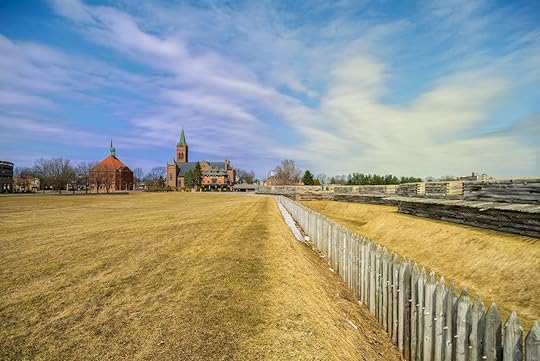
Photo: Mahmoud Masad/Shutterstock
It’s tough to keep track of the Italian capital’s countless landmarks. In Rome, NY, one attraction stands out above the rest: Fort Stanwix National Monument. The Revolutionary War site is known as the “for that never surrendered” during a 1777 British siege. Reenactors play out this history for onlookers. Visitors to Fort Stanwix can, and should, go back farther than colonial times to learn about the region’s Indigenous Oneida heritage, as well. Staying in Rome for a few days? Consider setting up camp along the water’s edge at Delta Lake State Park.
St. Petersburg, Florida
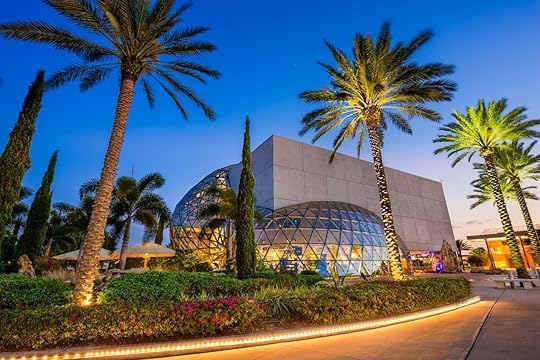
Photo: Sean Pavone/Shutterstock
Salvador Dalí is neither American nor Russian, but he is responsible for bringing tourism to St. Petersburg. Housing the largest collection of the Spanish surrealist artist’s works outside of Europe, this Florida city’s Dalí museum is a work of art in itself, with a geodesic glass design bubbling over the building’s facade. St. Petersburg’s Museum of Fine Arts, Morean Arts Center, and Chihuly Collection of glassworks also appeal to art lovers. Post cultural excursions, hit the sugar-white beaches of the five islands comprising Fort de Soto park just offshore.
Versailles, Kentucky

Photo: James Kirkikis/Shutterstock
It’s no 17th-century palace, but the Woodford Reserve Distillery in Versailles, KY, is a National Historic Landmark that’s been churning out bourbon since 1812. Visitors can continue along the Bourbon Trail from there, with the nearby Wild Turkey distillery up next. Switch to wine at the Wildside Winery one day, or take the family on a tour of the city’s railroad museum. All ages are welcome at WinStar Farm where some of the US’ most impressive racehorses are bred. If thoroughbreds are really your thing, Churchill Downs is only an hour away in Louisville.
Vienna, Virginia

Photo: MarkVanDykePhotography/Shutterstock
Nowhere near Austria, Vienna, VA, is a stone’s throw from one national capital: Washington, DC. It’s a sweet, simple town with a lot of scenic appeal. The Meadowlark Botanical Garden is a top draw, as is the Wolf Trap National Park for the Performing Arts, the only national park in the country dedicated to staging the arts. Come for pop, opera, jazz, or country performances in the fresh air, or make it a family outing at the Children’s Theatre-in-the-Woods. When it’s just the big kids, check out Jammin Java in town for live music, where even a big name like Paramore or Bon Iver might show up. 
More like thisTrip Planning9 US cities that will make you think you’re in Europe
The post 12 cities that will have you Eurotripping across the United States appeared first on Matador Network.

August 3, 2020
Paris fake building facades

There’s no doubt that Paris prides itself on its aesthetic. From homes to storefronts, government buildings and restaurants, the architecture is iconic. But Paris, like many of the world’s most famous and beautiful people, has a dark secret it probably doesn’t want you to know. Not all of those classic French facades are real.
After discovering that a door on the Rue Chapon was actually just an art installation, Youtuber The Tim Traveller decided to search the city for other fake buildings, and he found quite a few. In this video, he documents several facades in Paris that appear to be beautiful apartment or office buildings but which are actually architectural flimflam meant to disguise unsightly infrastructure like ventilation shafts and electrical substations.
The building at 29 rue Quincampoix, for example, looks real from afar but actually has painted-on windows. Its purpose is to hide the ventilation shafts from underground road tunnels. On 44 rue d’Aboukir, there appears to be a typical six-story Parisian building, but closer examination shows that it belongs to Paris’s public transport authority and was built to disguise a ventilation shaft for the metro. Similarly, at 145 rue la Fayette, a historic facade was preserved while the rest of the structure was demolished in the ‘80s to build a ventilation shaft. From the outside, the building looks like a classic French construction complete with windows and a balcony. Inside, well, there’s absolutely nothing.
Don’t let this realization change your view of Paris. If anything, it should give you a greater appreciation for the city’s lesser-known quirks. 
More like thisArt + Architecture7 lesser-known Parisian architectural wonders you can check out for free
The post Paris is full of fake buildings hidden in plain sight. Here is where they are. appeared first on Matador Network.

Matador Network's Blog
- Matador Network's profile
- 6 followers



